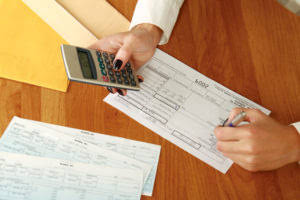
If the transaction tells you what the new balance in the account should be, we must calculate the amount of the change. The amount of the change is the amount of the expense in the journal entry. The percentage of sales method is based on the premise that the amount of bad debt is based on some measure of sales, either total sales or credit sales. Based on prior years, a income statement company can reasonably estimate what percentage of the sales measure will not be collected. If a company takes a percentage of sales (revenue), the calculated amount is the amount of the related bad debt expense.

Direct Write-off and Allowance Methods for Dealing with Bad Debt
Additionally, companies that operate on a cash basis Accounting for Marketing Agencies might align better with the method’s principles. Bad debt is an inevitable aspect of business operations, affecting cash flow and financial health. Managing these debts efficiently is important for maintaining accurate financial records.

What is the Direct Write Off Method?
The direct write-off method offers a straightforward approach to handling bad debts by writing them off as expenses when they are deemed uncollectible. Under the allowance method, an estimate of the future amount of bad debt is charged to a reserve account as soon as a sale is made. This means that the expense is paired with direct write-off method the sale, so that all expenses related to the sale are reported in the same period as the sale.
📆 Date: May 3-4, 2025🕛 Time: 8:30-11:30 AM EST📍 Venue: OnlineInstructor: Dheeraj Vaidya, CFA, FRM
- Since the current balance is $17,000, we need to increase the balance to $31,800.
- But it violates the accounting principles, GAAP, matching concepts, and a true and fair view of the Financial Statements.
- The method does not involve a reduction in the amount of recorded sales, only the increase of the bad debt expense.
- The two models used for such provisions are the direct write-off method accounting and the allowance method.
- The allowance is used the reduce the net amount of receivables that are due while leaving all the customer balances intact.
- Such fluctuations can challenge investors and analysts who rely on consistent financial performance metrics.
This method is appealing to small businesses or those with minimal bad debt occurrences, as it simplifies the accounting process. By writing off bad debts only when they become apparent, businesses can avoid the complexities of estimating future uncollectible amounts. This can be beneficial for companies with limited resources or those that prefer a more direct approach to financial management. GAAP mandates that expenses be matched with revenue during the same accounting period. But, under the direct write off method, the loss may be recorded in a different accounting period than when the original invoice was posted. The most important thing to remember when working with the allowance methods for bad debt is to know what you have calculated!

Advantages of the Direct Write-Off Method
This is the simplest way to recognize a bad debt, since the entry is only made when a specific customer invoice has been identified as a bad debt. The direct write off method is a way businesses account for debt can’t be collected from clients, where the Bad Debts Expense account is debited and Accounts Receivable is credited. An accounting firm prepares a company’s financial statements as per the laws in force and hands over the Financial Statements to its directors in return for a Remuneration of $ 5,000. The firm is taking regular follow-ups with the Company’s directors, to which the directors are not responding.
- The percentage of sales method is based on the premise that the amount of bad debt is based on some measure of sales, either total sales or credit sales.
- As with every other entry we have completed, the first step is to identify the accounts.
- The firm partners decide to write off these receivables of $ 5,000 as Bad Debts are not recoverable.
- The aging method is a modified percentage of receivables method that looks at the age of the receivables.

Once you figure a dollar amount, ask yourself if that amount is the bad debt expense or the allowance. If it is the allowance, you must then figure out how much bad debt to record in order to get to that balance. Under the allowance method, a company needs to review their accounts receivable (unpaid invoices) and estimate what amount they won’t be able to collect. This estimated amount is then debited from the account Bad Debts Expense and credited to a contra account called Allowance for Doubtful Accounts, according to the Houston Chronicle. This distortion goes against GAAP principles as the balance sheet will report more revenue than was generated. This is why GAAP doesn’t allow the direct write off method for financial reporting.

No responses yet